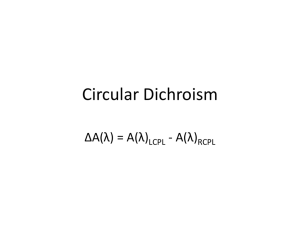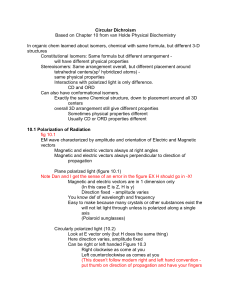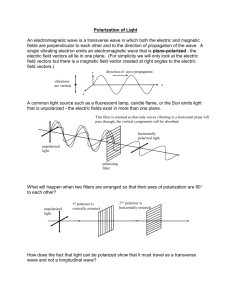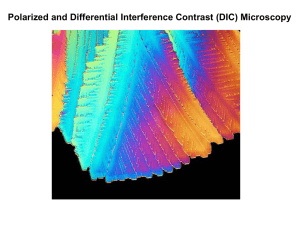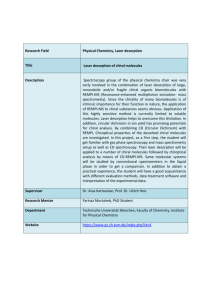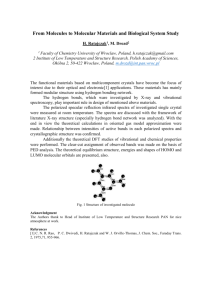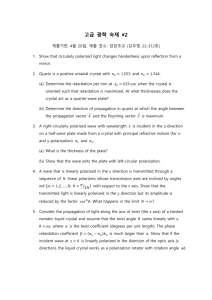Lecture 33 : Chiral molecules and Optical Activity
advertisement
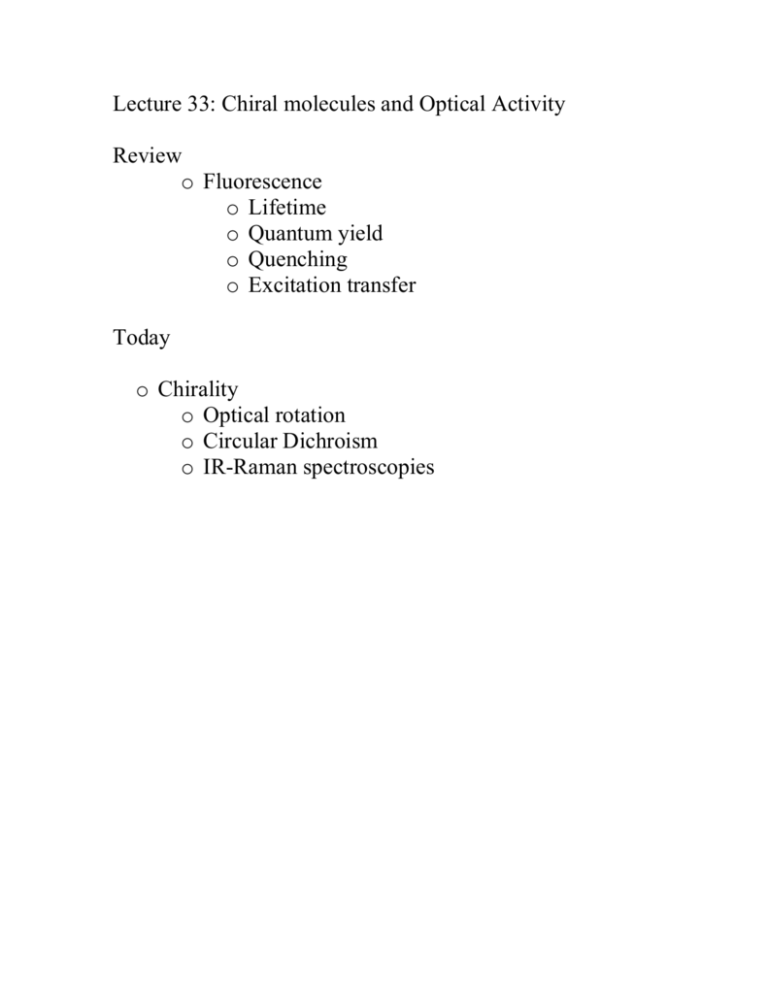
Lecture 33: Chiral molecules and Optical Activity Review o Fluorescence o Lifetime o Quantum yield o Quenching o Excitation transfer Today o Chirality o Optical rotation o Circular Dichroism o IR-Raman spectroscopies Chirality Simply stated, when a molecule or any geometric object and it’s mirror image are not identical (super-imposable) we call these objects chiral. Examples are: right handed or left handed helices, carbon atom covalently bonded to 4 different substituients. Most important biological molecules are chiral. Enzymes prefer to bind to specific isomer. Another common terminology that is used to describe the optically active isomers is dextro and levo or D and L respectively. Fundamentally, we characterize the chiral properties of molecules from their optical properties such as refractive indices or absorption. To understand how light can interact specifically with D or L type molecules; we need to define few special optical terminologies. Optical waves Consider a simple monochromatic light wave of wavelength propagating in z direction as shown below. The figure shows that the electric field, E is confined to the x-z plane only. However, in general, this field can be located anywhere in the x-y direction. So for an observer propagating with light wave, the E vector would appear to be randomly distributed. The figure on the left depicts “unpolarized light” and one to the right shows a “plane polarized light.” Mathematically we may write for the plane polarized light. Such plane polarized light can be generated from a polarizer. Circularly polarized light If however the E field rotates in space, either clockwise or counterclockwise, as light propagates then the situation appears as shown below. Right circularly polarized right has its E field rotating in the clockwise direction when viewed by observer situated in front of the incoming light ray. Mathematically, we can describe it: Similarly, a left circularly polarized light is given by: Note, the only difference between the two cases is the sign of Ey term. If we were to add these electric field components we observe that the net sum is a plane-polarized light! Hence a plane polarized light can be decomposed into two, a right and a left, polarized light beams!!. Interaction of plane polarized light with chiral molecules:Birefrngence The interaction of light with molecules in solutions involves either simple transmission or electronic absorption. However in solids/liquid crystals the transmission of light is affected by structural anisotropy. This is because the refractive index of these materials is different in different directions. Let us consider a case where the refractive index in x direction is larger than the y direction. The wavelengths and speeds of light in the two directions are different. Therefore, a plane polarized light will emerge from the sample, however it’s plane of polarization will be rotated by an angle . 2 n x n y z The difference between the two refractive indices is known as the linear birefringence. In a case when sample is composed of chiral molecules, we can anticipate that the refractive indices for right and left circularly polarized light need not be same. We denote the difference between these two refractive indices as the circular birefringence of chiral molecules in solution. Dichroism Similar to rotation of plane of polarized light, one can have selective absorption of light depending on how molecules are oriented with respect to it. This phenomenon, involving anisotropic absorption of polarized light, is known as dichroism. For solids or liquid crystals we use the term linear dichroism, while for the optically active molecules we use the term circular dichroism (CD). It is measured using a setup shown below. The term CD refers to the difference in the absorbance of the sample for left and right circularly polarized light. It is more common to define term the ellipticity The plane polarized light becomes an elliptically polarized upon its passage through a sample exhibiting CD. Summary The primary application of the CD and optical rotation (ORD) of biological molecules involves determination of secondary structures of proteins and nucleic acids. In general, the main contribution to CD arises from the spatial orientation of constituent monomers rather the individual monomers as shown below Nucleic Acids o CD can be positive or negative o The asymmetry of the pattern is a characteristic of whether one has a right or left handed helix Proteins Proteins can exhibit a range of secondary structures such as random coil, helices and sheets. The characteristic CD and rotations arising from such structures are shown below. Careful analysis yields estimates of relative proportions of individual components present in larger proteins. Note the technique does not yield a particular sequence of structures. Raman and IR spectroscopies Mainly used for vibrational analysis of molecules. For a transition to be observable in IR the dipole moment of the molecule must change as a result of vibrational excitation. For Raman spectroscopy, the polarizability must change as a result of vibrational excitation.

